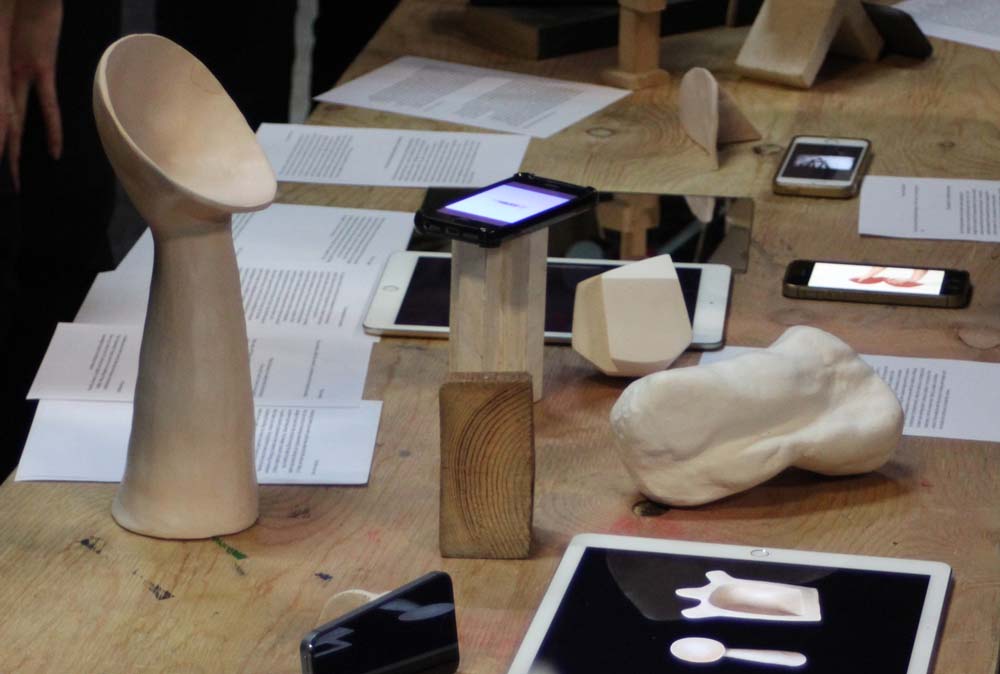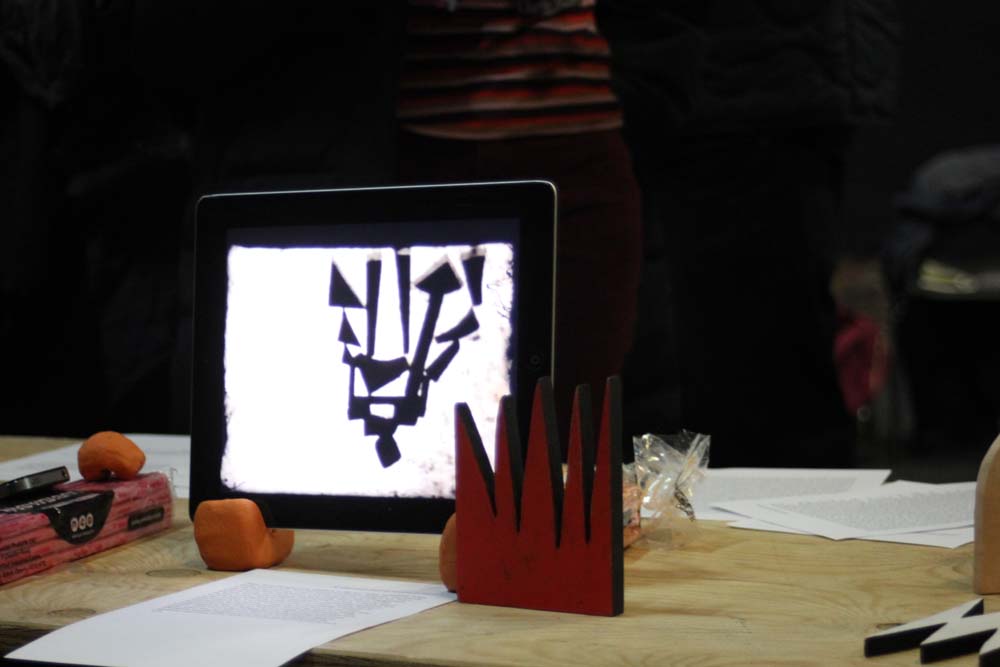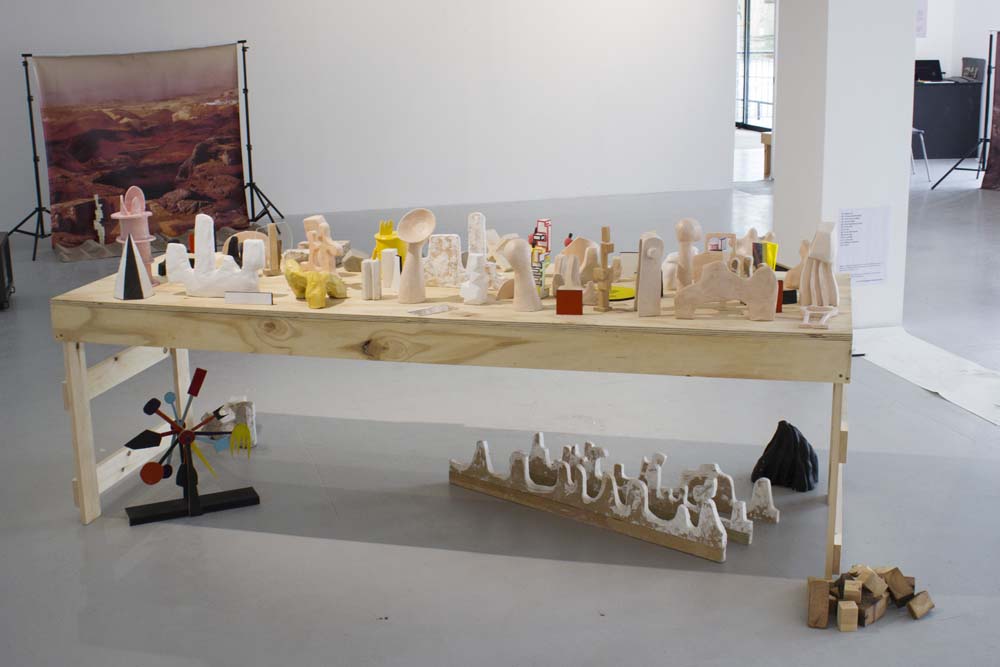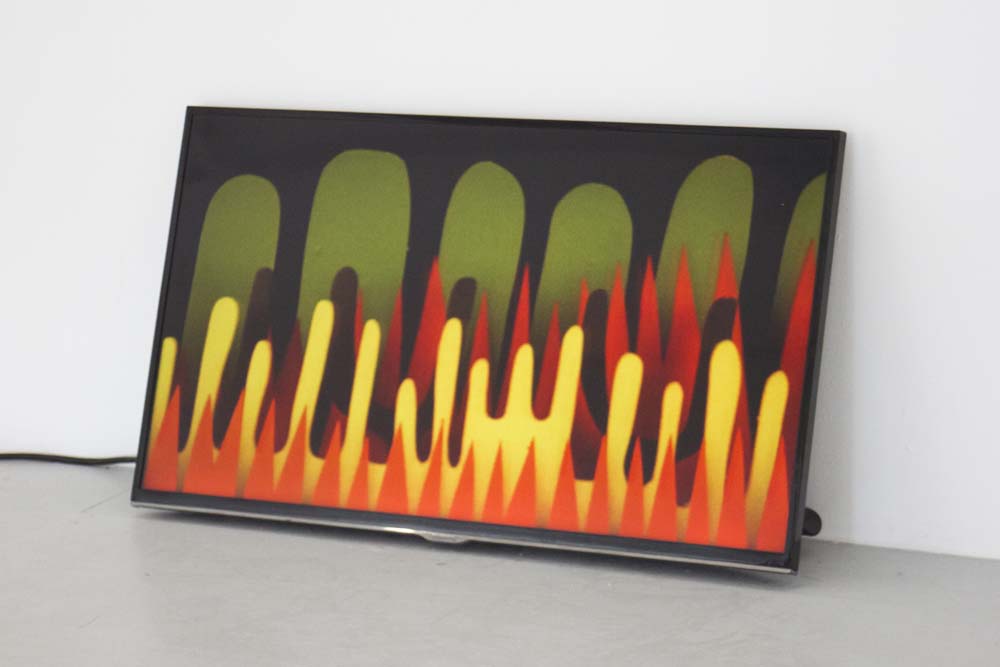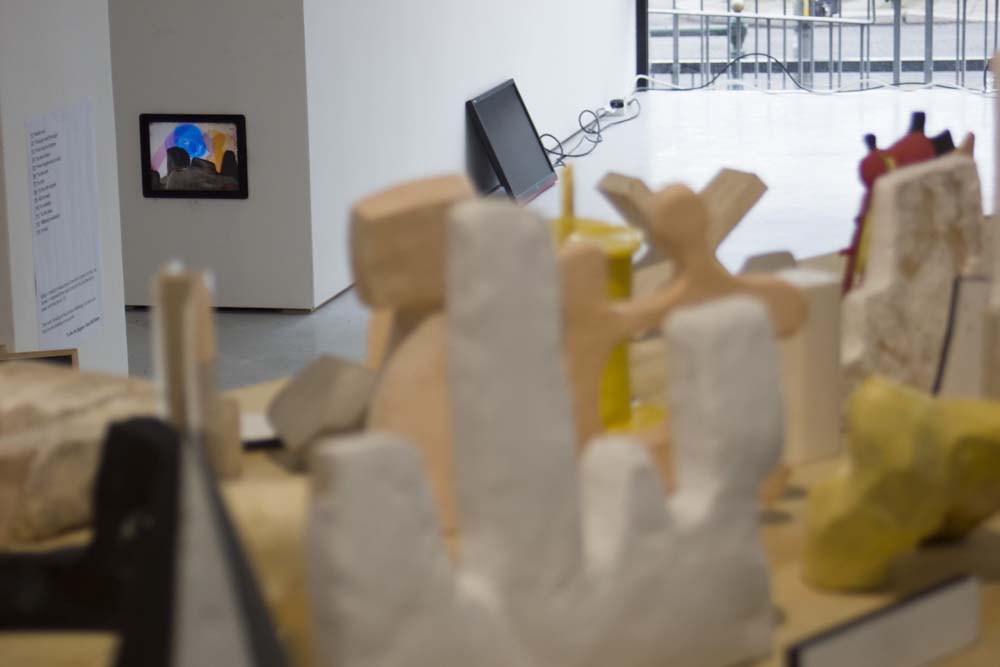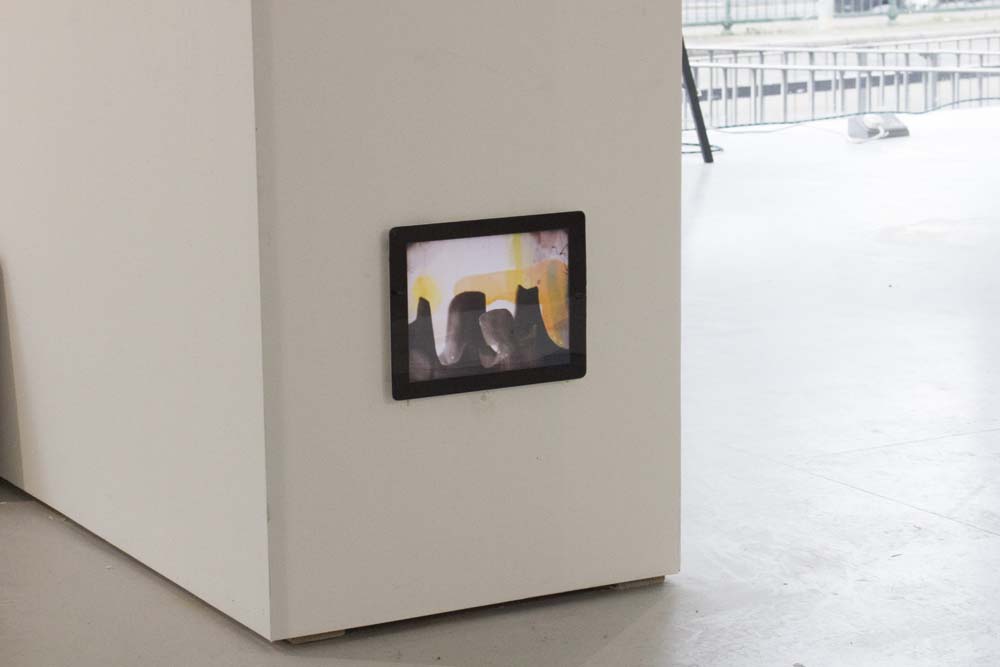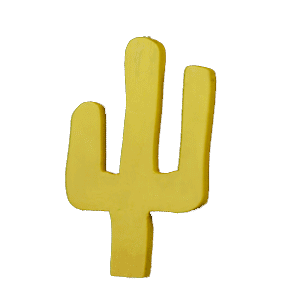
Table Tops – a Conclusion of Sorts. Nothing is Finished
Let’s begin with the table; a surface onto which things can be placed. There have been tables used throughout this research. From the first modelling and cutting to the final presentation, tables have been used to place objects upon, sometimes with rolls of paper or black sheets pulled down over them, in order to film objects on clean backgrounds. The table is a work surface. It is not a plinth or a shelf. It elevates things to a working height, one which naturally enables us to stretch out our hands towards the objects that populate its surface, and do things.
The table top has been a break-through. Towards the end of a process in which it was held that the objects were of little or no importance in themselves, but that only their images would reach the audience, I brought as many as I could carry to the ICA and arranged them on a table around and amongst the films which were presented on small screens. For the first time people could encounter and interact with the objects themselves, alongside the films.
At a presentation I gave at an early stage in the research, someone asked me whether the objects were simply an excuse to make films, things that were necessary in order to explore the technical possibilities of the camera, but of no real importance in themselves. This could have been the route that my understanding of the research took, focusing on the different cameras I used as the active element in the research.
As the research developed however, the objects themselves have become more and more of a puzzle; far more interesting, in fact than the technicalities of camera formats and equipment. As we have seen, the contrary nature of these sculptures made to be filmed has become a significant area of analysis and exploration, prompted by the route of the practical art making, which increasingly favoured the handling and physical interaction with objects in front of a fixed camera, as well as multiple forms of dissemination, including screenings, talks, exhibitions and participatory workshops. ...Links with art educational practice, particularly through work with Tate Learning and the BA in Fine Art at Kingston School of Art and engagement with thinkers such as Nicholas Addison, gave the research a context and purpose beyond the creation of discrete artworks for the gallery, and allowed the art making process to be thought of as a process of experimental and experiential learning. Further, by understanding workshops to be both a context for undertaking research, as well as a valid means of engaging audiences in the work’s reception, the various outputs of the research, including screenings, talks, exhibitions and writing, could be viewed as ways of actively engaging the viewer, and augmenting their encounters with the research and its objects (the sculptures and films).
Cameras become a new way of exploring these particular objects, of forging new relationships with them. The camera acted as a means through which to play with the objects: the artist and viewer responding to the situation; the camera enabling an altered mode of attention. The objects then act as invitations and prompts for inquisitive action within a specific context, that of the invitation to film. I have written above that the objects did not need to be exactly the way they are. They could easily have been a little different and still functioned as well within the context of the research. Equally the films and gifs, which have resulted from my encounters with objects, are not the final, finished authored work. They are the result of the play invited by the objects and by the various filming situations generated. They may themselves be invitations, possible realisations of a process with endless permutations.
Like Harman’s objects and relations, these sculptures made to be filmed are never used up, there are always possibilities which remain to be activated. As with the work of Eva Rothschild, Robert Morris, Lazlo Moholy-Nagy and Laure Prouvost, they embody potential, awaiting multiple physical and imaginative realisations. Like that of like that of Adam Gillam they could be seen as open- ended gestures turned toward the future. They are an agglomeration of elements, the locus of a series of practices, performances and explorations, always with the camera in mind.
Above all perhaps sculptures made to be filmed are productive, as is their relationship with the camera; both enable engagement, exploration and discovery. They produce not only moving images, but physical, thoughtful and imaginative interactions, which inspire thought and discussion. The aim of this conclusion is not to define exactly what these objects are, nor to put to a close this line of research, but to act as an opening up of possibilities, ways of acting and thinking towards and about sculpture, within an expanded and experimental artistic research practice. All the elements that make up this PhD submission, whether insights taken from experience, theoretical concepts, analytical writing, films, gifs, collaborative films, performances, exhibitions, symposia, experimental workshops or the sculptures themselves, are generative. They are tools with which to prompt thoughtful and imaginative physical and material engagement.
They also represent an expanded form of art research, informed by and informative to, art teaching, and an understanding of the embodied, emotional and socially engaged nature of art practice research, within the context of the academy. In this respect a significant aspect of the research’s contribution to knowledge is that it serves as a model for a type of embodied, intuitive engagement with its processes and subject matter, which is academically and artistically significant. It is critically engaged precisely because it embraces the personal, social, collaborative and uncertain character, seen as inherent in the many forms of artistic engagement that have been undertaken. It is also significant in the way it involves other people within the research practice as active agents and learners. As has been stated above, the research has not been undertaken in order to present discrete and abstracted findings which can be presented (to a disinterested audience), rather it has sought to bring its audiences (whether in academic, artistic or educational contexts) into the research process, allowing or inviting them, in various ways, to involve themselves in the forms of thought, questioning and practical activity that it embodies.
It is with some sadness that I submit this document; not only because the past four years have been personally incredibly exciting and fruitful, but because a document like this seems to produce a closure which has never been desired. Finally, the research has settled into this form. It is not the only way things could have settled; it isn’t perfect. It necessarily produces a caricature, a partial rendering, setting down some avenues of thought and leaving out others. The hope is that this research will inspire further thought and artistic practice and that the sculptures, if that is what they are, may still exist for other people or my future self to continue making and exploring. The research has not exhausted the possibilities of the pictured sculpture, nor even of these objects made to be filmed. Rather it has uncovered a territory or area of investigation, with innumerable undiscovered corners.
The submission ends with a series of images documenting all of the sculptures which have been used within the research, or at least all of those that have survived to this point. A nod to Paul McCarthy who, in the early 1990s individually photographed the props from his early performance works in a documentary style, creating a series of images called PROPO (1993). These photographs pay new attention to the objects, marked and scarred by their past ordeals, making them the focus of the viewer’s consideration.
Earlier in the research this would have been considered a counter-productive gesture. After all, doesn’t the research set itself against this type of supposedly transparent reproduction? What these images allow, however, is for every object to be included. In an ideal world, perhaps reading this would magic the objects themselves into the reader’s presence, in order that they could handle them, and possibly try to enact or extend some of the practice documented. Failing this, it is hoped they will give the reader a sense of the objects as things with pasts and futures: a certain self-sufficient reality of their own, at the same time as being invitations for action and exploration. It is these objects, the sculptures made to be filmed, which are submitted as the core of the research. As its locus, they embody the research’s findings.
Unlike McCarthy’s performance props, locked away in chests, these objects are still available for use. They are not curiosities or artefacts of past events – although, like McCarthy’s objects many of them bear the traces of things which have happened. They remain objects tuned towards potential futures, new interactions, new modes of filming and of physical, material and imaginative exploration. Even if they never again leave the boxes in which they are stored, the invitation is there, at least in principle.
The table top has been a break-through. Towards the end of a process in which it was held that the objects were of little or no importance in themselves, but that only their images would reach the audience, I brought as many as I could carry to the ICA and arranged them on a table around and amongst the films which were presented on small screens. For the first time people could encounter and interact with the objects themselves, alongside the films.
At a presentation I gave at an early stage in the research, someone asked me whether the objects were simply an excuse to make films, things that were necessary in order to explore the technical possibilities of the camera, but of no real importance in themselves. This could have been the route that my understanding of the research took, focusing on the different cameras I used as the active element in the research.
As the research developed however, the objects themselves have become more and more of a puzzle; far more interesting, in fact than the technicalities of camera formats and equipment. As we have seen, the contrary nature of these sculptures made to be filmed has become a significant area of analysis and exploration, prompted by the route of the practical art making, which increasingly favoured the handling and physical interaction with objects in front of a fixed camera, as well as multiple forms of dissemination, including screenings, talks, exhibitions and participatory workshops. ...Links with art educational practice, particularly through work with Tate Learning and the BA in Fine Art at Kingston School of Art and engagement with thinkers such as Nicholas Addison, gave the research a context and purpose beyond the creation of discrete artworks for the gallery, and allowed the art making process to be thought of as a process of experimental and experiential learning. Further, by understanding workshops to be both a context for undertaking research, as well as a valid means of engaging audiences in the work’s reception, the various outputs of the research, including screenings, talks, exhibitions and writing, could be viewed as ways of actively engaging the viewer, and augmenting their encounters with the research and its objects (the sculptures and films).
Cameras become a new way of exploring these particular objects, of forging new relationships with them. The camera acted as a means through which to play with the objects: the artist and viewer responding to the situation; the camera enabling an altered mode of attention. The objects then act as invitations and prompts for inquisitive action within a specific context, that of the invitation to film. I have written above that the objects did not need to be exactly the way they are. They could easily have been a little different and still functioned as well within the context of the research. Equally the films and gifs, which have resulted from my encounters with objects, are not the final, finished authored work. They are the result of the play invited by the objects and by the various filming situations generated. They may themselves be invitations, possible realisations of a process with endless permutations.
Like Harman’s objects and relations, these sculptures made to be filmed are never used up, there are always possibilities which remain to be activated. As with the work of Eva Rothschild, Robert Morris, Lazlo Moholy-Nagy and Laure Prouvost, they embody potential, awaiting multiple physical and imaginative realisations. Like that of like that of Adam Gillam they could be seen as open- ended gestures turned toward the future. They are an agglomeration of elements, the locus of a series of practices, performances and explorations, always with the camera in mind.
Above all perhaps sculptures made to be filmed are productive, as is their relationship with the camera; both enable engagement, exploration and discovery. They produce not only moving images, but physical, thoughtful and imaginative interactions, which inspire thought and discussion. The aim of this conclusion is not to define exactly what these objects are, nor to put to a close this line of research, but to act as an opening up of possibilities, ways of acting and thinking towards and about sculpture, within an expanded and experimental artistic research practice. All the elements that make up this PhD submission, whether insights taken from experience, theoretical concepts, analytical writing, films, gifs, collaborative films, performances, exhibitions, symposia, experimental workshops or the sculptures themselves, are generative. They are tools with which to prompt thoughtful and imaginative physical and material engagement.
They also represent an expanded form of art research, informed by and informative to, art teaching, and an understanding of the embodied, emotional and socially engaged nature of art practice research, within the context of the academy. In this respect a significant aspect of the research’s contribution to knowledge is that it serves as a model for a type of embodied, intuitive engagement with its processes and subject matter, which is academically and artistically significant. It is critically engaged precisely because it embraces the personal, social, collaborative and uncertain character, seen as inherent in the many forms of artistic engagement that have been undertaken. It is also significant in the way it involves other people within the research practice as active agents and learners. As has been stated above, the research has not been undertaken in order to present discrete and abstracted findings which can be presented (to a disinterested audience), rather it has sought to bring its audiences (whether in academic, artistic or educational contexts) into the research process, allowing or inviting them, in various ways, to involve themselves in the forms of thought, questioning and practical activity that it embodies.
It is with some sadness that I submit this document; not only because the past four years have been personally incredibly exciting and fruitful, but because a document like this seems to produce a closure which has never been desired. Finally, the research has settled into this form. It is not the only way things could have settled; it isn’t perfect. It necessarily produces a caricature, a partial rendering, setting down some avenues of thought and leaving out others. The hope is that this research will inspire further thought and artistic practice and that the sculptures, if that is what they are, may still exist for other people or my future self to continue making and exploring. The research has not exhausted the possibilities of the pictured sculpture, nor even of these objects made to be filmed. Rather it has uncovered a territory or area of investigation, with innumerable undiscovered corners.
The submission ends with a series of images documenting all of the sculptures which have been used within the research, or at least all of those that have survived to this point. A nod to Paul McCarthy who, in the early 1990s individually photographed the props from his early performance works in a documentary style, creating a series of images called PROPO (1993). These photographs pay new attention to the objects, marked and scarred by their past ordeals, making them the focus of the viewer’s consideration.
Earlier in the research this would have been considered a counter-productive gesture. After all, doesn’t the research set itself against this type of supposedly transparent reproduction? What these images allow, however, is for every object to be included. In an ideal world, perhaps reading this would magic the objects themselves into the reader’s presence, in order that they could handle them, and possibly try to enact or extend some of the practice documented. Failing this, it is hoped they will give the reader a sense of the objects as things with pasts and futures: a certain self-sufficient reality of their own, at the same time as being invitations for action and exploration. It is these objects, the sculptures made to be filmed, which are submitted as the core of the research. As its locus, they embody the research’s findings.
Unlike McCarthy’s performance props, locked away in chests, these objects are still available for use. They are not curiosities or artefacts of past events – although, like McCarthy’s objects many of them bear the traces of things which have happened. They remain objects tuned towards potential futures, new interactions, new modes of filming and of physical, material and imaginative exploration. Even if they never again leave the boxes in which they are stored, the invitation is there, at least in principle.
